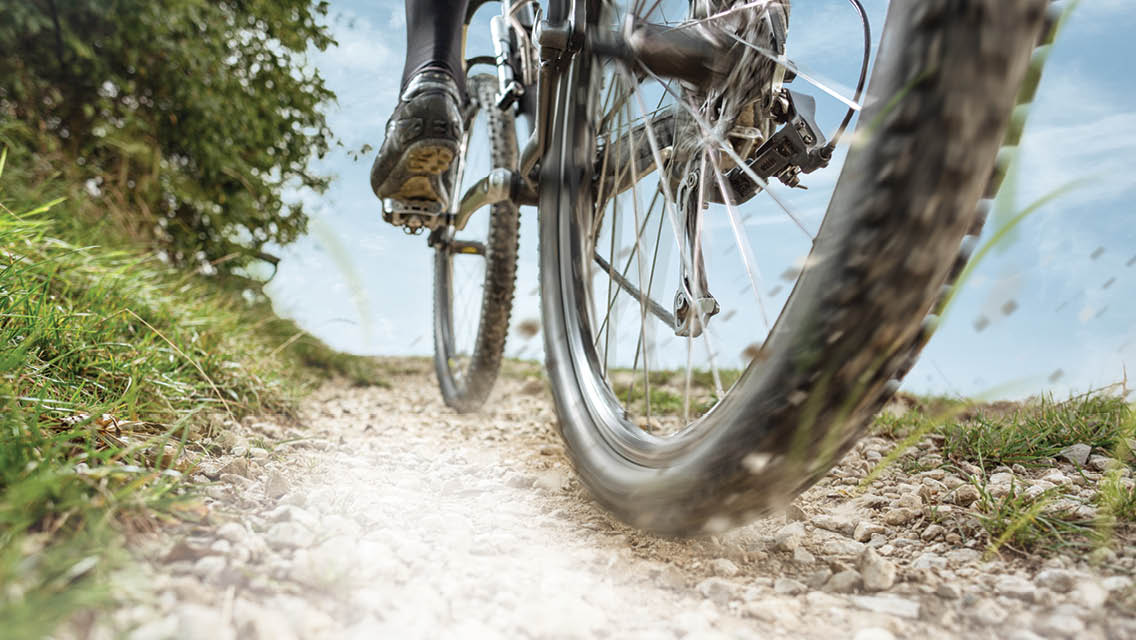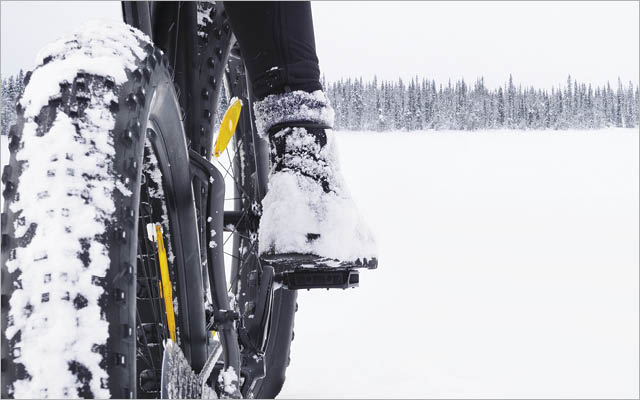I’m always ready to take the road less traveled. It’s a trait that recently led me to gravel cycling, a catchall term to describe riding on a mix of unpaved surfaces — trails, fire roads, and singletrack, any of which might contain some loose or crushed rock and stone.
Sure, sometimes that means I carry my bike across train tracks or hold on tight as I slide my way down a rocky hill. Yet there’s something exciting about getting off the beaten path that keeps me coming back for more — and I’m not the only one who feels that way.
Sales of gravel-specific bikes increased 109 percent between 2019 and 2021. And gravel racing has exploded in popularity: Life Time’s 200-mile Unbound Gravel race in Kansas, for example, grew from 34 riders in 2006 to almost 4,000 in 2021.
What makes gravel racing special, according to many riders, is the community. Some feel it’s more inclusive than the road-cycling scene.
The sport boasts unique terrain challenges while also being less treacherous than mountain biking and easier on the body than other endurance sports.
“After some injuries while mountain biking, I started spending more time on the gravel bike,” explains professional bike racer Emily Schaldach. “I still felt that sense of technical challenge left over from mountain biking, but the risks felt significantly lower.”
Gravel Riding Gear Tips
Gravel bikes incorporate features from road and mountain bikes, and they are optimized for riding off-pavement. They resemble road bikes thanks to drop handlebars and a lack of suspension, but they have easier gearing and tires that can be as wide as those used on mountain bikes. (These specialized components mean that gravel bikes can be pricey, running between $2,000 and $3,000 for a good balance of value and performance.)
There is also variety within the category of gravel bike. Someone riding flat, packed roads could opt for harder gears and smoother, faster tires. Those riding more mountainous terrain might want a bike with lower gear ratios for climbing and knobbier tires for traction.
“Part of riding gravel is building in a sense of flexibility,” says Schaldach. “The bike is not going to be ideal all of the time.”
You can get away with riding a normal road or cyclocross bike on hard-packed, well-maintained roads. Mountain bikes will also allow you to try out gravel cycling; just be prepared to feel slower, especially if using knobby tires intended for trails.
The tires are key: “Pay attention to tire width and tread pattern in particular,” advises off-road-bicycle racer Rachel Olzer, PhD, executive director of All Bikes Welcome and cofounder of Pedal 2 the People. “You may want narrow and low tread for smoother gravel. For chunkier gravel, you may want wider, knobby tires for more traction.”
How to Plan a Ride
Because gravel riders often travel on unpaved roads instead of bike paths, finding routes can be more difficult than just searching online for “gravel-cycling routes near me.” That said, planning a ride doesn’t have to be hard if you know where to look.
There are several online communities devoted to gravel cycling. Dirty Freehub features a collection of shorter curated routes, while Bikepacking.com provides detailed information for overnight, multiday, and multiweek rides all over the world.
It’s also worth searching Ride With GPS and Strava, apps that share gravel rides uploaded by users in your area.
“I typically plan routes using a combination of applications and help from other FTWN-B [femme, trans, women, and nonbinary] and BIPOC cyclists,” says Olzer, who uses they/she pronouns.
Group rides are a good way to try gravel cycling. Many bike shops and clubs hold weekly or monthly rides, so check in with your local shop — even if they don’t host a ride, they can usually refer you to groups that do. If you are new to riding, look for “no drop” rides that are slower paced and beginner friendly.
Riding with a group can help you stay safe. Still, Olzer notes that gravel cycling can feel risky for women and people of color.
“Being in rural parts as a person of color, in particular, can be really scary. That’s why it’s important to talk with other marginalized folks about the perceived and real risks of riding gravel in groups or solo,” says Olzer.
“Be alert and make sure to listen to your gut. Be prepared to reroute if you are uncomfortable at any point in your ride,” they add. “Sharing your location with a friend or family member and asking them to be on standby in case you need to bail helps give peace of mind.”
Basic Gravel Cycling Skills
Experienced bicyclists won’t have too much trouble adapting to gravel, but there are a few skills that can help you ride safely.
- When you’re going uphill or cornering sharply, the top layer of gravel can shift underneath you. To combat this, carry momentum into hills and remain in the saddle while climbing. Staying seated keeps your weight over your back wheel and stops it from spinning out.
- At corners, you may have to be less aggressive than you would be on a paved road. Slow down before you begin turning to avoid skidding. While cornering, push your outside foot down on the pedal and your inside hand down on your handlebar: This prevents your wheels from slipping and helps you balance through the turn.
- Staying on the most packed portions of routes also makes riding and cornering easier. “While maintaining a regard for safety on the road, check out different sections to find the smoothest path,” advises Schaldach. Sometimes the shoulders are nice and smooth; other times, riding where car tires have packed down the road is most comfortable.
Don’t be discouraged if you aren’t barreling along gravel roads at a quick pace right away.
“Be consistent and patient,” says Kristi Mohn, a member of the marketing team for Life Time’s off-road events and cofounder of the Girls Gone Gravel podcast. It might take a few tries to get the hang of riding gravel.
Get Race Ready
Gravel racing doesn’t have to mean months of preparation for a 200-mile contest — unless you want it to. While long, intense races often garner the most attention, many events also cater to new riders. “Start small and local if you really find it intimidating,” suggests Mohn.
There are gravel races across the country that feature shorter courses or beginner categories. Races such as Unbound offer 25-mile events for riders looking to get started, or for those who are just not interested in competing in the 200-mile marquee event.
If you are serious about racing, having a training plan is vitally important.
“I’d suggest either getting a coach or finding a training program,” says Mohn, who last year was inducted into the Gravel Cycling Hall of Fame. “Unbound Gravel has programs available for free, and they are a good place to start.”
When it comes to training, a common mistake is focusing only on endurance riding. Because of mass starts, steep rollers, race tactics, headwinds, and the possibility of having to sprint at the finish, it’s essential to also develop your all-out power.
“Remember the sprints and top-end efforts, even though for the majority of the race you will benefit most from long-endurance-style training,” says Schaldach.
Perhaps most important, the gravel-racing community prides itself on fostering a welcoming, all-inclusive environment.
“Realize the folks you are meeting at these events are super stoked you are joining,” notes Mohn. “They are really glad you are giving it a go!”
This article originally appeared as “Riding Gravel” in the April 2023 issue of Experience Life.






This Post Has 0 Comments